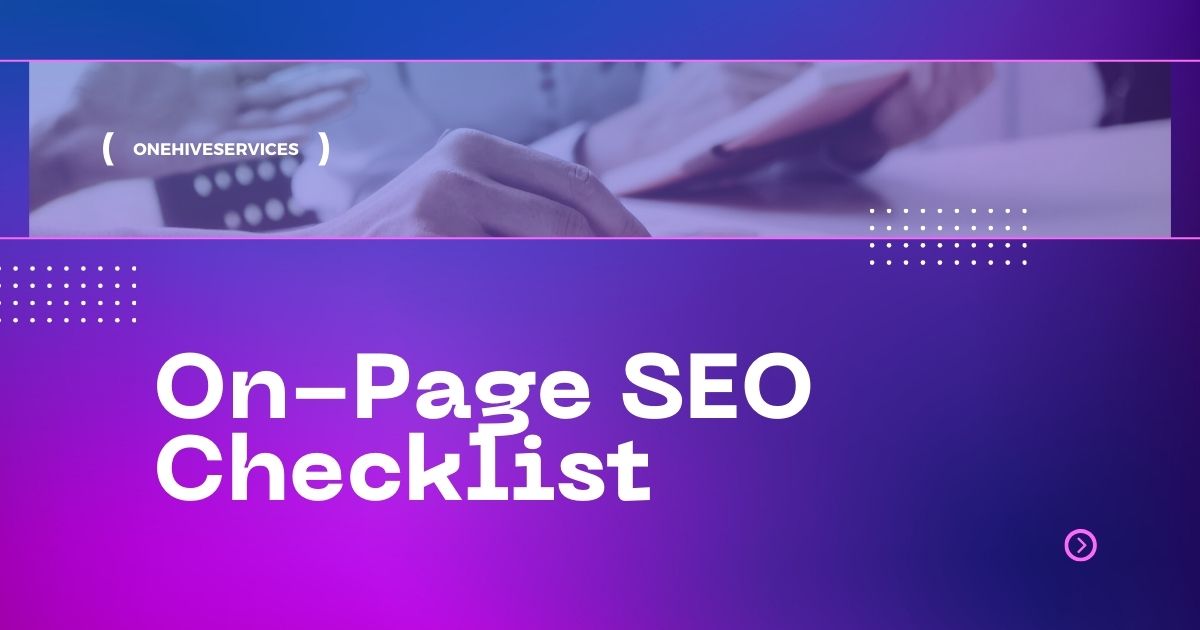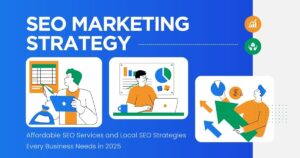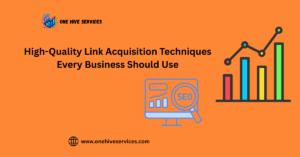Search engine optimization is the backbone of digital visibility, and mastering on-page strategies is essential for ranking higher on Google. While backlinks and off-page efforts play a role, the foundation begins with on-page SEO optimization. This on-page SEO checklist will help you cover every critical factor, ensuring your website stands out in 2025.
What is On-Page SEO?
On-page SEO refers to optimizing elements within your own website to improve rankings, user experience, and visibility on search engines. Unlike off-page SEO, which relies on backlinks, on-page SEO is fully under your control—covering everything from content quality to technical structure.
Why You Need an On-Page SEO Checklist
Without a structured approach, it’s easy to overlook vital steps. An on-page SEO checklist ensures:
- Content is aligned with user intent.
- Pages are structured for search engine crawlers.
- Technical SEO factors like speed and mobile usability are optimized.
- Keyword usage is natural and effective.
- You deliver the best possible user experience (UX).
On-Page SEO Checklist for 2025
Here’s a step-by-step breakdown of everything you should include:
1. Title Tags and Meta Descriptions
Craft unique, keyword-rich title tags (under 60 characters) and meta descriptions (under 160 characters). Include your primary keyword naturally and keep them engaging for clicks.
2. Header Tags (H1, H2, H3)
Organize content with H1, H2, and H3 headings. Use keywords in headings where it makes sense, but don’t overstuff. Clear structure helps both readers and search engines.
3. Keyword Placement and Density
Place your target keyword in the first 100 words, headings, and naturally throughout the content. Avoid overuse—Google rewards readability over repetition.
4. URL Structure
Keep URLs short, descriptive, and keyword-focused. For example:yourdomain.com/on-page-seo-checklist instead of yourdomain.com/123?id=456.
5. Internal Linking
Use internal links to connect relevant articles and guide users deeper into your website. This reduces bounce rates and distributes link equity across pages.
6. Image Optimization
Compress images for faster loading. Use descriptive alt text with keywords for accessibility and SEO benefits.
7. Mobile-Friendliness
Google prioritizes mobile-first indexing. Ensure your website is fully responsive, with buttons, text, and visuals optimized for smaller screens.
8. Page Speed and Core Web Vitals
Slow sites frustrate users and lower rankings. Optimize images, leverage browser caching, and use lightweight code. Test your site with Google PageSpeed Insights.
9. Content Quality and Freshness
Content should be original, in-depth, and updated regularly. Add multimedia (images, videos, infographics) to improve engagement and retention.
10. User Engagement Signals
High bounce rates and low time-on-page hurt SEO. Use clear navigation, engaging CTAs, and scannable formats (bullet points, numbered lists) to keep visitors engaged.
11. Schema Markup
Implement structured data to enhance search results with rich snippets (reviews, FAQs, product info).
12. Secure and Accessible Website
Make sure your site uses HTTPS and is accessible to both users and search engines with a proper sitemap and robots.txt file.
SEO Optimization Tips for Better Results
Here are some practical SEO optimization tips to go beyond the basics:
- Perform regular SEO audits to spot errors and gaps.
- Target long-tail keywords for easier ranking opportunities.
- Use LSI keywords to improve topical relevance.
- Monitor analytics to see what content drives results.
- Update old content instead of just publishing new posts.
- Optimize for voice search by including conversational queries.
Why On-Page SEO Matters in 2025
As Google’s algorithms become smarter, on-page factors like content depth, mobile experience, and speed are more important than ever. A solid on-page SEO checklist ensures your business isn’t just chasing rankings but also delivering real value to visitors.
Even the best off-page strategy cannot compensate for a poorly structured website. By prioritizing on-page efforts, you set a strong foundation for long-term growth.
Expert Support for On-Page SEO
While checklists and tips are great, businesses often need professional guidance to ensure no detail is missed. That’s where expert partners like onehiveservices can help with audits, strategy, and implementation to maximize results.
Get Your Free On-Page SEO Audit
Want to know how well your website is optimized? Use our free audit of on-page SEO Services to discover strengths and weaknesses instantly.
FAQs on On-Page SEO
1. What is the difference between on-page and off-page SEO?
On-page focuses on website elements like content, structure, and code, while off-page involves external signals such as backlinks.
2. How often should I update my on-page SEO?
At least every 3–6 months, or whenever major algorithm changes occur.
3. Does keyword density still matter?
Yes, but only naturally. Overstuffing keywords can hurt rankings. Aim for context instead of exact repetition.
4. What tools can I use for on-page SEO?
Google Analytics, Google Search Console, Screaming Frog, and SEMrush are popular choices.
5. Can I do on-page SEO myself?
Yes, but professional audits often uncover hidden issues that DIY methods miss.




Pingback: Outsource Link Building Intelligent Strategy
Pingback: High-Quality Link Acquisition Techniques Every Business Should Use
Pingback: SEO Made Simple: Proven Strategies to Improve Your Online Visibility
Pingback: Backlinks Explained: Why They Still Matter for SEO in 2025 - onehiveservices.com